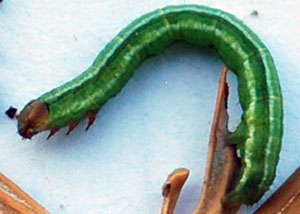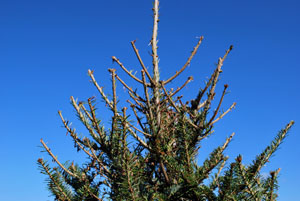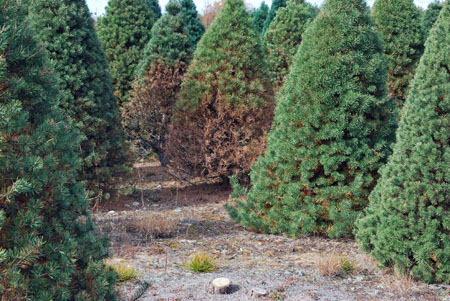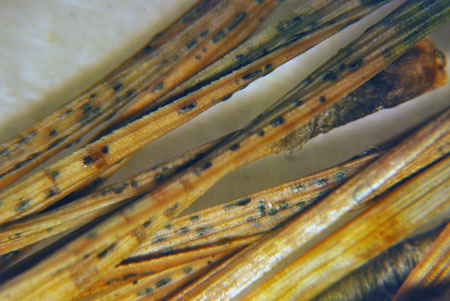Keep scouting for late season pests in Christmas trees
Late season pests like spider mites, spruce-fir loopers and brown spot needle blight can still affect the quality of your Christmas trees before harvest.
After Labor Day, attention often shifts from growing trees to the harvest ahead. Growers, however, should continue to scout their plantations for late season pests that can still affect the quality of the foliage of Christmas trees and may make them unsalable.
Spider mites
Spruce spider mites often seem to disappear in hot, dry weather of July and August, only to reappear when temperatures begin to cool in the fall. Pay particular attention to the trees you plan to harvest this year. Check for mite activity by closely inspecting the older needles near the tree stem or by sharply rapping shoots over white cardboard or a notebook with white paper.
Spruce-fir loopers
This insect may go unnoticed on Fraser or balsam fir until the trees have a significant amount of damage. The caterpillar is anywhere from 0.25 to 1.0 inch long, light green with dark green and white stripes. The head capsule is light brown. The larvae chew notches out of the needles, which after a few days turn brown. Needles can also be found hanging from silken threads. Most of the damage can be in the top part of the tree, but feeding can be found throughout the tree. Use a scouting board or a white sheet of paper and tap the trees (like sampling for spider mites) to find these larvae.
View the MSU Extension spruce-fir looper factsheet for more information on this insect.

Spruce-fir looper.

Damage to the top of a Fraser fir.
Brown spot needle blight
Brown spot needle blight had not been reported in Michigan until the fall of 2010. At this time of the year, you will find Scotch pines that have all of a sudden started to turn brown from the bottom up. On some trees, only the very top of the tree is still green. Looking closely at the foliage, you will find reddish-brown, resin-soaked spots with yellow margins on green needles. On brown needles, you will find lots of black fruiting bodies. At this time of the year, it is best to remove and destroy infected trees from the plantation. On trees that you harvest this fall, make sure not to leave live, infected branches on the stumps.



 Print
Print Email
Email




